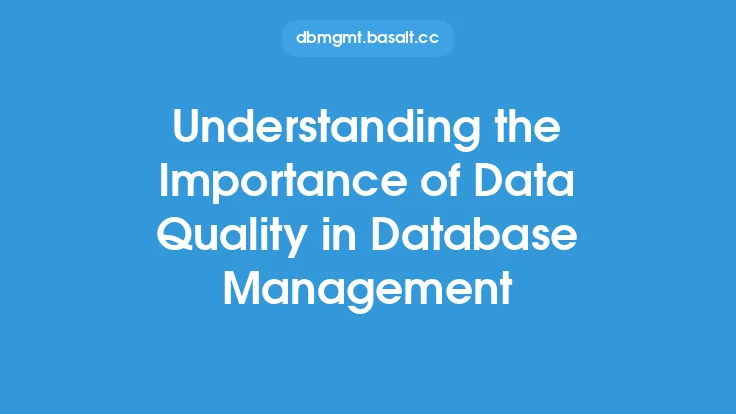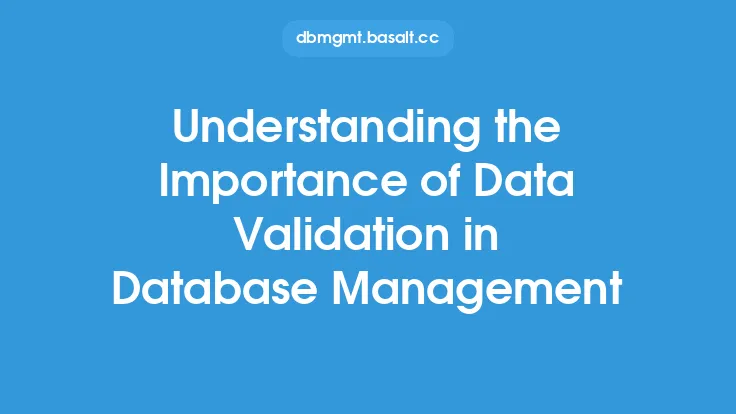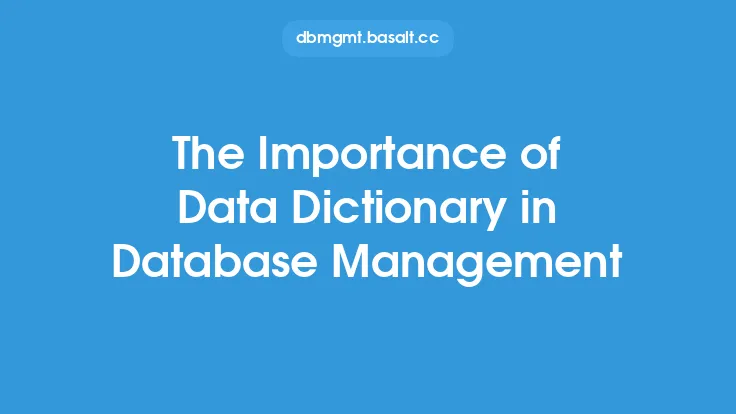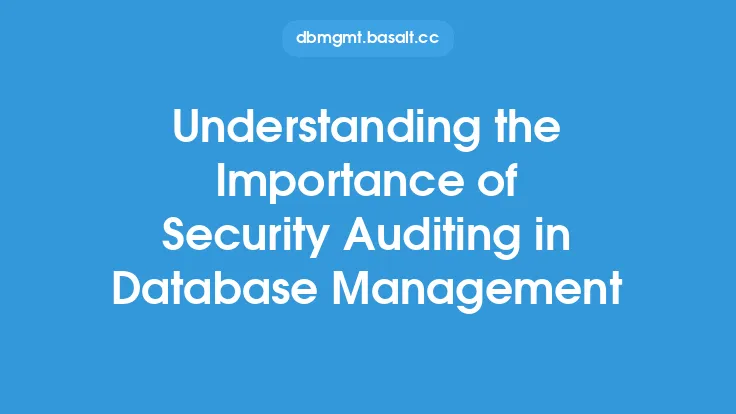Data normalization is a crucial aspect of database management, and one of the key techniques used to achieve it is data disaggregation. Data disaggregation refers to the process of breaking down complex data sets into smaller, more granular components, allowing for more accurate and efficient analysis. This process is essential in ensuring that data is consistent, scalable, and easily maintainable.
Introduction to Data Disaggregation
Data disaggregation is a fundamental concept in data normalization, which involves organizing data in a way that minimizes data redundancy and dependency. By breaking down complex data sets into smaller components, data disaggregation helps to eliminate data anomalies and inconsistencies, making it easier to manage and analyze data. This process is particularly important in large databases, where data is often collected from multiple sources and can be prone to errors and inconsistencies.
Benefits of Data Disaggregation
The benefits of data disaggregation are numerous. For one, it allows for more accurate analysis of data, as smaller, more granular components can be analyzed independently, reducing the risk of errors and inconsistencies. Additionally, data disaggregation improves data scalability, making it easier to add new data or modify existing data without compromising the integrity of the database. It also enhances data flexibility, allowing for more efficient data retrieval and manipulation. Furthermore, data disaggregation reduces data redundancy, eliminating duplicate data and minimizing storage requirements.
Types of Data Disaggregation
There are several types of data disaggregation, each with its own unique characteristics and applications. One common type is horizontal disaggregation, which involves breaking down data into smaller components based on specific criteria, such as date or location. Another type is vertical disaggregation, which involves breaking down data into smaller components based on hierarchical relationships, such as customer or product categories. Additionally, there is also temporal disaggregation, which involves breaking down data into smaller components based on time intervals, such as daily or monthly sales data.
Data Disaggregation Techniques
Several techniques are used to achieve data disaggregation, including data partitioning, data grouping, and data normalization. Data partitioning involves dividing data into smaller components based on specific criteria, such as range or list partitioning. Data grouping involves combining related data elements into a single component, such as grouping customer data by demographic characteristics. Data normalization involves organizing data in a way that minimizes data redundancy and dependency, using techniques such as first normal form (1NF), second normal form (2NF), and third normal form (3NF).
Challenges and Limitations of Data Disaggregation
While data disaggregation is a powerful technique for improving data analysis and management, it also presents several challenges and limitations. One of the main challenges is determining the optimal level of granularity, as excessive disaggregation can lead to data overload and decreased performance. Additionally, data disaggregation can be time-consuming and resource-intensive, particularly in large databases. Furthermore, data disaggregation requires careful consideration of data relationships and dependencies, to avoid compromising data integrity and consistency.
Best Practices for Implementing Data Disaggregation
To implement data disaggregation effectively, several best practices should be followed. First, it is essential to define clear goals and objectives for data disaggregation, such as improving data analysis or reducing data redundancy. Next, the data should be carefully analyzed to determine the optimal level of granularity and the most effective techniques for achieving it. Additionally, data relationships and dependencies should be carefully considered, to avoid compromising data integrity and consistency. Finally, the data should be regularly monitored and maintained, to ensure that it remains accurate, consistent, and scalable.
Tools and Technologies for Data Disaggregation
Several tools and technologies are available to support data disaggregation, including database management systems, data warehousing platforms, and data analysis software. Database management systems, such as relational databases or NoSQL databases, provide a range of features and tools for data normalization and disaggregation. Data warehousing platforms, such as Amazon Redshift or Google BigQuery, provide scalable and flexible solutions for data storage and analysis. Data analysis software, such as Tableau or Power BI, provide interactive and visual tools for data analysis and visualization.
Conclusion
In conclusion, data disaggregation is a critical technique in data normalization, allowing for more accurate and efficient analysis of complex data sets. By breaking down data into smaller, more granular components, data disaggregation improves data scalability, flexibility, and consistency, while reducing data redundancy and errors. While it presents several challenges and limitations, data disaggregation can be effectively implemented using a range of techniques, tools, and technologies. As data continues to grow in volume and complexity, the importance of data disaggregation will only continue to increase, making it a vital skill for data professionals and organizations seeking to unlock the full potential of their data.





